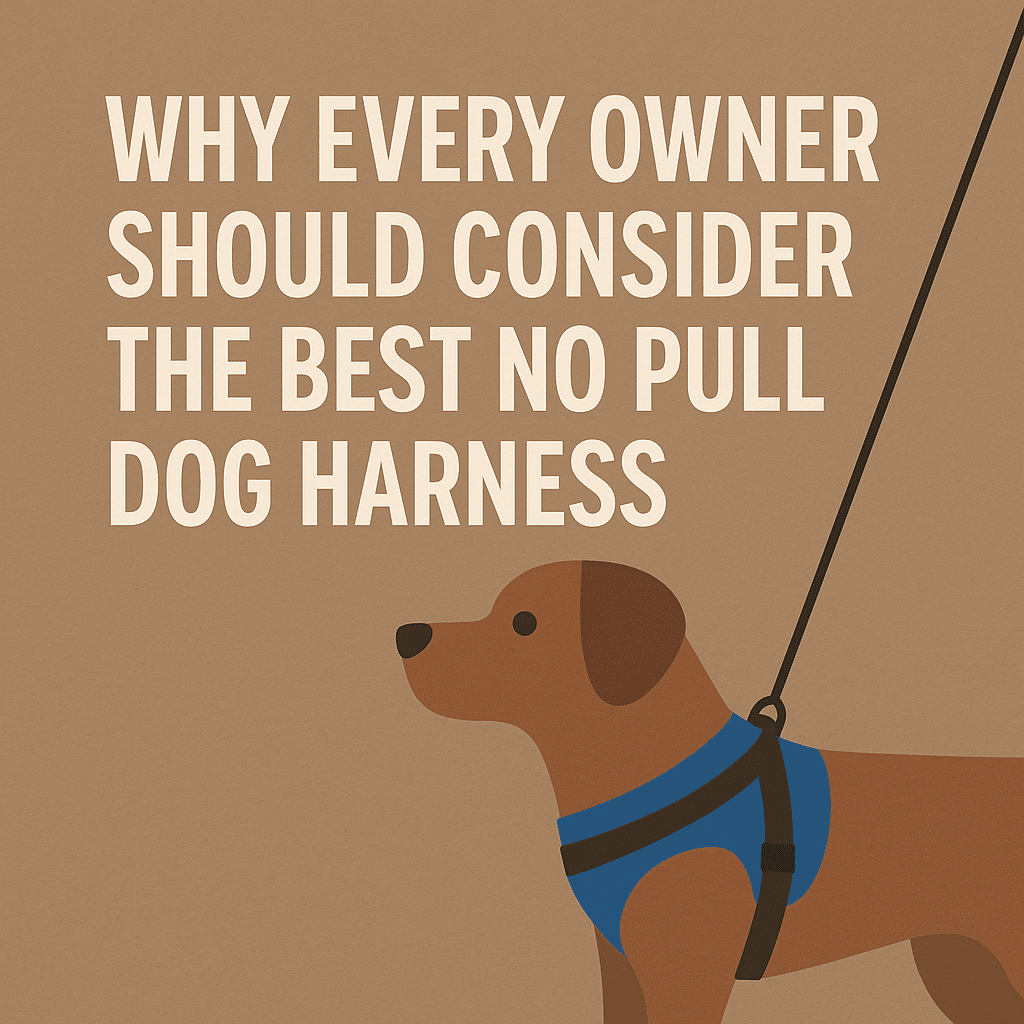Why Every Owner Should Consider the Best No Pull Dog Harness

Why Every Dog Owner Should Use No-Pull Harnessess: Comfort, Control, and Kinder Walks 🦮
Walks should be relaxing; however, many owners battle pulling, zig-zagging, and sudden lunges.
A no-pull dog harness offers a humane, practical solution.
Because it redirects force across the chest and shoulders—rather than the neck—it improves control,
reduces strain, and, importantly, supports reward-based training. Consequently, you and your dog can enjoy calmer, safer outings.
How No-Pull Harnesses Work (and Why That Matters)
Front-clip or dual-clip designs help you guide your dog’s body back toward you,
rather than allowing momentum to build forward. As a result, pulling becomes inefficient and less rewarding.
Moreover, the harness provides clearer feedback, so loose-leash walking becomes easier to teach.
For additional training technique ideas, see the Association of Professional Dog Trainers (APDT),
which promotes positive, evidence-based methods.
Health & Safety Benefits Compared to Collars
Traditional collars can concentrate pressure on the trachea and cervical spine; by contrast,
a no-pull harness spreads load over the torso. Therefore, it’s often a better option for dogs that cough,
wheeze, or pull hard. Furthermore, improved control reduces the risk of sudden dashes into traffic or toward distractions.
For safe-walking tips and equipment guidance, the UK charity PDSA
shares practical, vet-backed advice.
Training Synergy: Tools + Technique
Even the best no pull dog harnessess works best alongside training. Thus, pair it with high-value rewards, clear cues,
and brief, frequent practice sessions. In addition, reinforce calm attention and check-ins before increasing
difficulty around squirrels, bicycles, or other triggers. For behavior resources grounded in modern science,
explore the International Association of Animal Behavior Consultants (IAABC).
Their materials emphasize humane, force-free strategies that complement equipment like no-pull harnesses.
Fit First: Comfort Prevents Chafing and Escapes
Proper fit is essential; accordingly, measure your dog’s chest girth and adjust all straps so two fingers fit comfortably beneath.
Meanwhile, ensure no rubbing at the armpits or shoulders, and test movement with turns, sits, and short trots.
If in doubt, choose an adjustable model with front and back attachment points. For options sized from small to large breeds,
browse our curated dog harness collection.
When a Harness Isn’t Enough
Some dogs pull due to fear, frustration, or over-arousal. In those cases, a harness is helpful;
nevertheless, you may also need a tailored plan. Therefore, consider shorter walks, decompression sniff sessions,
and gradual exposure to triggers. Additionally, rule out medical contributors like pain or respiratory issues with your veterinarian.
Ultimately, a no-pull harness promotes comfort, communication, and confidence—for both ends of the leash.
Because it aligns with modern training principles, it makes progress more consistent and more enjoyable.
Ready to upgrade your walks? Start with our best-seller:
No-Pull Dog Harness,
and, for variety, explore our full range of harness styles.
With the right fit, positive reinforcement, and a little patience, smoother strolls are just around the corner.

